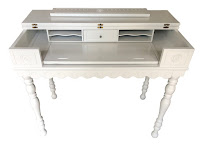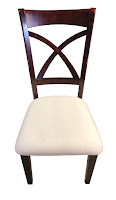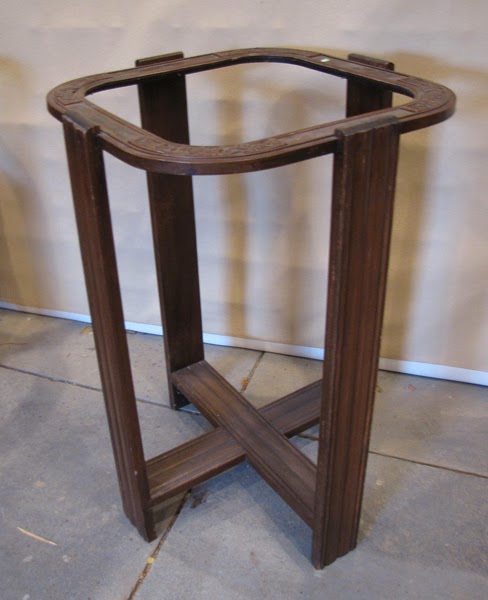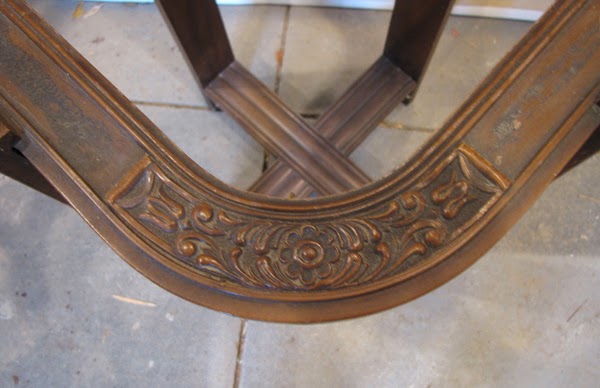 |
| High Boy Dresser After Paint |
 |
| High Boy Dresser Before Paint |
My customer had wanted an updated look, so I recommended painting as opposed to refinishing it with stain. After showing her several paint samples, she did her own research and found a lovely neutral creamy beige color, which complemented the design of the furniture, bringing out the details.
Both dressers had plenty of drawers, which each had to be painted individually, thus removed from the dressers so they can be masked off and primed, then ultimately painted. We use a high quality paint that holds up well to daily usage. It’s on the costly side, but is well worth it. Painting requires a lot of prep work, so it’s better to use high quality paint.
 |
| Low Dresser After Painting |
 |
| Low Dresser Before Painting |
Our customer had the foresight to label each drawer so that they are easily reinstalled into their proper places in the dressers. You’d think that you could put drawers anywhere within the same dresser, but that’s not always the case. There are times when the drawers only fit in one spot, so marking them ahead of time is a great idea. Just one of those little trick you pick up along the way. A couple of the drawers had lost their bottom tracking, so Jim reinstalled them so they once again worked properly.
 |
| Nightstand After |
 |
| Nightstand Before |
Since my customer had opted to use the same hardware, we cleaned them up on the polishing wheel. Since they were made of brass, they polished up nicely and looked great with the newly painted furniture. Brass polishes up great, but if it’s brass plated, using the wheel exposes only the steel, not the brass.
The finished bedroom set looked terrific once it was painted. As refinishers, we love working with “real” wood, because it refinishes much better than some of the newer products which are made nowadays. The wood made a half a century ago was made really well and if preserved properly, will last another half century or more. Antique furniture is by its nature made to last as generations of these special pieces have survived many decades of everyday use with minimum wear. But when they require refinishing or updating, we make it lovely again.















































